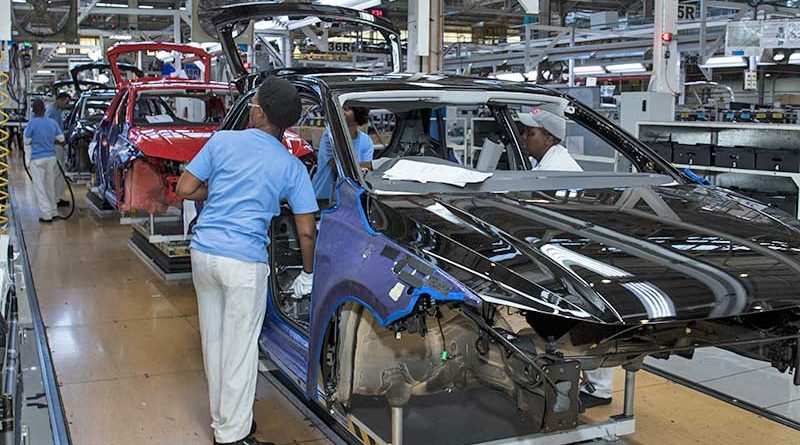As a result of the COVID-19 pandemic, schools were on lockdown in South Africa from March 2020. They only partially reopened in June, despite teacher unions’ concerns about the timing and lack of adequate protection for teachers and learners.
The unions’ objections about having to work in conditions that posed a risk to health were understandable. But they have been less vocal about the teachers’ need to be equipped with the skills and infrastructure to teach during a pandemic.
The unpredictability of the pandemic and the restrictions on social interaction remain in place. No immediate end is in sight. Teachers have had to move from a space in which they have years of experience to the unknown and challenging world of online, remote, correspondence and socially distanced teaching.
The Department of Basic Education produced a COVID-19 guide for teachers focused on creating learning environments using technology. In practice, this meant the teachers needed to facilitate learning with the help of digital tools such as e-learning platforms, online videos and audio tutorials.
But the guide isn’t enough. Teachers are teaching with limited support and skills. My experience as a teacher educator, a researcher in teacher education and as a former high school teacher point to the fact that teachers are woefully underprepared to deal with the current situation.
The average age of South African teachers is 43. This implies that many left teacher training over 20 years ago and might have limited knowledge of designing learning that differs from face-to-face classroom methods.
Vision for technology
The use of technology to design and transform learning and assessment has been a strategic goal for some years, as captured in the 2004 White Paper on e-Education. Over the years, the Department of Basic Education has added detail to its vision in documents such as Guidelines on e-Safety in Schools: Educating Towards Responsible, Accountable and Ethical Use of Information and Communication Technology in Education and Guidelines for Teacher Training and Professional Development in Information and Communication Technology.
But the department has experienced a number of challenges along the way. One main challenge has been the expense of investing in technology, and whether it’s justified by the return. Even before the pandemic, there were challenges with the use of technology in public schools that included inadequate infrastructure, poor internet connectivity and lack of digitally competent teachers.
During the lockdown, this reality was made clearer as many public-school teachers who didn’t have the experience, knowledge or infrastructure to facilitate online learning found it challenging.
Based on earlier research it’s much more likely that they didn’t use the technology to its full capacity. For example, previous studies showed that teachers didn’t use technology to help learners produce knowledge.
There’s also the fact that the teacher workforce is largely ageing and technophobic. The instructional methods in an online learning environment differ from the face-to-face classroom that most teachers use. The online ways of supporting learning and attending to different learning styles require skills that teachers from traditional classrooms don’t have.
Added to this is the fact that there is uneven access to digital tools across the country.
The new challenges in teaching
The pandemic has taken the known interactive, collaborative and cooperative classrooms and predictable timetables from teachers and replaced them with uncertainty.
These are perilous times, but teachers are transforming and adapting their knowledge to ensure that learning takes place. Research shows that teachers are able to reshape their knowledge and dispositions to function and respond to any challenging situations.
There is no manual for this situation. But there is an opportunity to rethink and redesign what it means to teach and learn during and after the pandemic. Importantly, it’s a chance to address the gross inequalities and inadequacies in South African education.
Source: The Conversation
IN South Africa, local operations of international motor manufacturing companies must constantly innovate to meet global demands and offer competitive value. The way work is done is constantly changing.
The current technologies adopted in the workplace are ever smarter than those that went before.
This trend, driven by economic forces, does not always lead to social improvements. Automation and the use of robots in manufacturing, combined with new working methods and systems, can have negative social impacts on workers.
Job automation in South Africa
There has been an increase in technology in South Africa’s automobile sector since 2003. Most of the work in vehicle manufacturing has been automated, which makes manufacturing easier, faster, and more productive. More units of cars are produced daily. Companies used to manufacture only 20 units of cars hourly. Now they are manufacturing over 100 units an hour using the same number of autoworkers.
Our study of the industry found that automation is well advanced. The sector’s body shop is fully automated. The paint shop is 80% automated. There is about 20% technology utilisation in the car assembly line. And logistics is making a lot more use of machines than before.
These percentages are an indicator of how workers have lost the contest with technology in the industry. Many workers are being deskilled: they no longer fully use their skills to do their job, because robots do most of the work. The remaining workers are being reshuffled to assembly lines likely to be automated with time. This increase in job automation and deskilling can cause some workers to lose their jobs because their skills have been substituted by machines.
We gathered data through in-depth interviews with 30 participants, drawn from three automobile companies. They included managers, autoworkers and workers’ representatives.
Our interviews with management revealed that management does not necessarily prefer machines over human workers. But in order for the product to compete, they have to consider production capacity, quality and workplace economics.
Where they intend to introduce machines, it is not to take over the jobs of the workers but because some tasks require the use of machines. For example, one cannot expect workers to lift a car while another person is working underneath it. A machine can do that without endangering the workers. Still, management said that if given the chance, they would replace more workers with machines as robots perform more tasks efficiently and boost productivity without the need for negotiation.
What automation means for workers
Though robots have eased the process of labour, their increasing use stagnates the population of workers on the shop floor, paint floor, body shop and assembly line.
The decisions that resulted in the reallocation of many autoworkers from the body shop and paint shop to the assembly line are almost irreversible. One worker said:
If you have to look at the traditional press line, you would have an average of 20 operators. Now you only need four operators just to pack the parts. So, 16 workers are reduced by introducing five robots. The affected workers are moved to other departments within the industry for now.
Growth in the automobile industry does not create more jobs for human workers. Where automation does create jobs, it is mostly in managing the technology. It doesn’t create work for existing skills.
This creates the threat of a rising unemployment rate, which was at 30.1% in the first quarter of 2020. That, in turn, contributes to South Africa’s position among the most unequal countries in the world.
Driving forces
The adoption of technologies can relieve workers from strenuous tasks and boost productivity but will most likely also relieve workers of their jobs entirely.
As an initiative to boost productivity and save costs, the global auto industry expects thousands of job losses with an estimation of 234 000 jobs cut by 2030 in Germany, 12 000 job cuts by Ford in Europe by the end of 2020, and 2 000 job losses in India by the end of 2020.
We noted in our research that the capacity of the auto workers’ trade union, the National Union of Metalworkers of South Africa, to collectively restructure the auto sector with management and benefit all stakeholders is weakened due to the coercive control of the management and top-down labour arrangement.
Innovation is the driving force of consumers and this is what management responds to. But instead of valuing innovation above all else, industrial policy-makers should seriously examine how far it can boost the human condition before it becomes a problem by contributing to job losses, employment uncertainty, deskilling and inequality.
The solutions would be to retain existing jobs, increase job opportunities, revamp industrial policy, reduce the rate of task allocation to technologies, and make the automobile sector’s production process more labour intensive than capital intensive.
The state, car companies, unions, workers, consumers and society in general all have a role to play in effecting meaningful economic change and employment reform that is sustainable for all. – The Conversation.
Source: The African Mirror
Maxwell Sangulani Chikumbutso, a United States-based Zimbabwean widely acclaimed for his innovations that include the world’s first evergreen power generator which can produce electricity using radiofrequency has made it to the Thrive II documentary which captured breakthroughs in science, medicine and engineering among top global innovators and inventors across the world.
The documentary titled: Thrive II – This Is What It Takes was launched recently and viewed by more than 126 million people worldwide.
The documentary follows a journey across the globe investigating the most promising solutions in energy, health, consciousness, and non-coercive self-organizing while unpacking the underlying science, principles and strategies that make them possible.
The South Sudan Government through the Ministry of Information, Communication, Technology and Postal Services in partnership with Crawford Capital has rolled out e-government services in a bid to balance their economic and health objective.
The services are meant to help South Sudanese easily adapt to the new normal and to keep their economy afloat.
Services such as e–visa, nationality passports and immigration services will be accessed through www.eservices.gov.ss and www.evisa.gov.ss, e-government portals.
“The move will reduce red tape, eliminate corruption, enhance transparency, provide safe and convenient delivery of services to the people and encourage citizen feedback and participation.” Said Maker Bona Nyang Madut, Chief of e-Government Services.
As the coronavirus disease (COVID-19) continues to spread globally, the South Sudanese government has imposed sweeping measures to curb the spread. The transition to e-governance will make the South Sudan government more in tune with the changing times.
“The South Sudan government is committed to providing sanctity in the management and utilization of public resources with the application of ICTs geared toward combating corruption. These institutional reforms we have put in place provide a platform for e-governance in managing public resources for the benefit of the citizenry.” Added Madut
Madut expressed confidence in the potential of new technologies and trends in data processing to improve the delivery of public services, enhance administrative governance. He also gave assurance to those worried about the potential of reducing the civil service workforce. Stating that while an increase in productivity and public service effectiveness was important, this must not be linked with making the civil service workforce smaller.
"The use of technology cannot be avoided, but the civil service workforce must also find ways to improve work quality," said Madut.
For South Sudan to leapfrog in its attempt to join the world in meeting the Sustainable Development Goals (SDGs), setting up a sustainable digital economy is one of the prerequisites.
The largest pillars of most digital economies that have worked are the implementation of G2B (Government to Business) and G2C (Government to Citizen) services.
Having the services accessible online is expected to improve the ease of doing business in the country and attract foreign investments.
Source: The Standard




